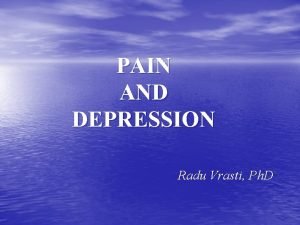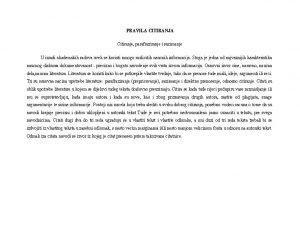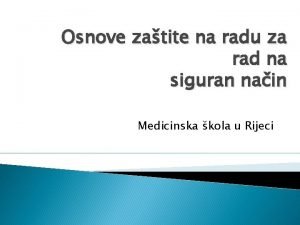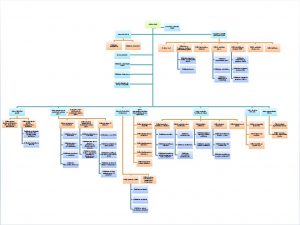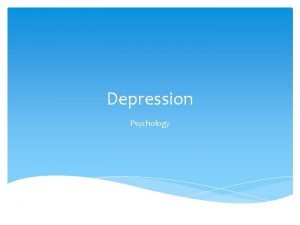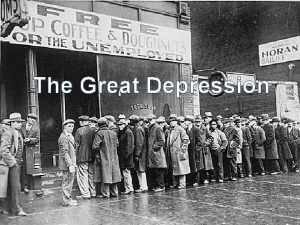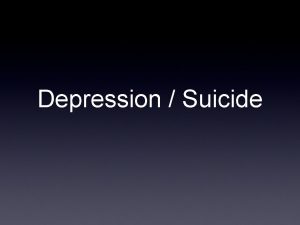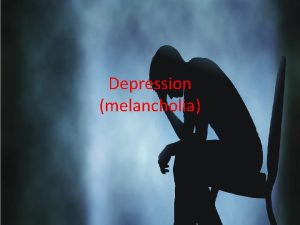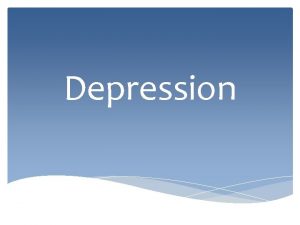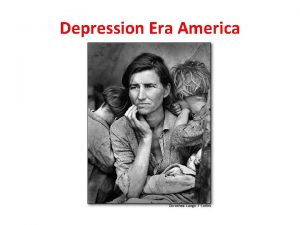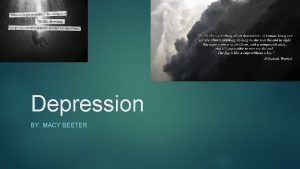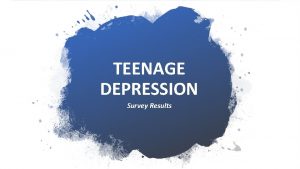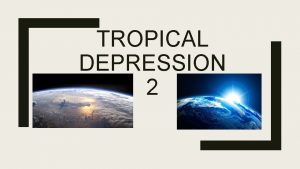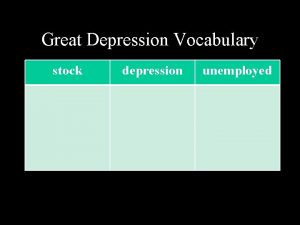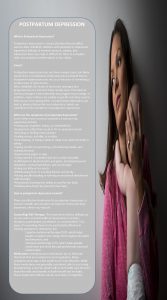PAIN AND DEPRESSION Radu Vrasti Ph D Pain























- Slides: 23

PAIN AND DEPRESSION Radu Vrasti, Ph. D

Pain and depression-old common experiences When our ancestors faced physical damage or failed to understand their surroundings, they became frustrated, down, fearful, angry, guilty… and learned to suffer… Physical pain or emotional pain both use the same pathway to our brain… Pain and depression has the same meaning for our mind… suffering!

Emotional Relationship Between Pain and Depression SUFFERING (FRUSTRATION) PAIN DEPRESSION SUFFERING (REINFORCEMENT)

Acute pain When pain arises our mind receives a ring that something wrong has happened in the body

Chronic pain In cases of chronic pain there is a “false alarm” and the bell continues to ring without apparent cause

Pain: Prevalence in population • 25 to 30 percent of the North-Americans suffer • from chronic pain 50 -75% of those experiencing chronic pain are partially or totally disabled for a period of days (i. e. headache) or weeks and months (i. e. back pain, arthritis, fibromyalgia)

Pain: Some statistics • 1 in 3 Canadians suffer from some form of recurring pain • 1 of every 3 families contain a person who suffer from chronic pain • 4 out of 5 people have one severe headache a year • 1 in 5 Canadians experiences migraines or other headaches • 1 in 7 Canadians is affected by arthritis

Depression: statistics • 7. 9 -8. 6% of adults will have major depression during • • • their lifetime in Canada; 6. 5% of women have a major depressive disorder; 3. 3% of men have a major depressive disorder; lifetime incidence of major depression found that 7. 9% to 8. 6% of adults over 18 years of age;

Pain and depression: statistics • People with chronic pain have three times the average • • • risk of developing depression; People with depression have three times likelihood developing chronic pain; 75% of patients with clinical depression present to their doctors because of physical symptoms including pain; 40 -60% of patients being treated at pain clinics report experiencing symptoms of depression.

Pain and depression: brain chemistry The same neurotransmitters (serotonin and norepinephrine) and the same neural pathways and brain centers (limbic area) are involved in the regulation of mood (depression) and pain.

Pain vocabulary • throbbing, flashing, shooting, sharp, dull ache, hurt, sore, intense, flickering, quivering, • pulsing, beating, pounding, jumping, pricking, boring, drilling, stabbing, lacerating, • • cutting, pinching, pressing, gnawing, cramping, tugging, pulling, wrenching, hot, burning, scalding, searing, tingling, itchy, smarting, heavy, tender, taut, rasping, splitting, tiring, exhausting, sickening, suffocating, fearful, frightful, terrifying, punishing, grueling, cruel, vicious, killing, wretched, blinding, annoying, troublesome, miserable, intense, unbearable, spreading, radiating, penetrating, piercing, tight, numb, drawing, squeezing, tearing, cool, cold, freezing, nagging, nauseating, agonizing, dreadful, torturing, continuous, steady, constant, rhythmic, periodic, intermittent, brief, momentary, transient, mild, discomforting, distressing (Wendy Duggleby, The Language of Pain)

Characteristics of chronic pain • Medications taken excessively or inappropriately; • Inappropriate patterns of accessing the medical • • system; Physical inactivity and weakness; Depression and other emotional problems; Lack of coping skills to deal with pain and disability; Family, work, and community problems associated with pain.

Characteristics of chronic depression • Feelings of worthlessness, self-reproach, or excessive or • • inappropriate guilt Loss of interest of pleasure in usual activities, or decreased sex drive Complaints or evidence of diminished ability to think or concentrate Poor appetite or significant weight loss or weight gain Insomnia or hypersomnia Psychomotor agitation or retardation Loss of energy or fatigue Recurrent thoughts of death

Type of Pain • • Back pain, neck pain Joint pain Headache Muscle pain Stomach pain Premenstrual pain Dental pain Other 13. 9 (%) 13. 8 13. 3 9. 9 4. 0 3. 7 1. 9 2. 0

Mental Factors Involved in Pain • • • Consciousness Focus of attention Memories Expectations Your mental attitudes and beliefs

Three ways of conceptualizing pain: • Pain as a teacher or reminder • Pain as an opponent • Pain as a survivable event

Ways to Close the Gate of Pain 1. Physical self-management - Application of heat or cold - Massage - Exercise, 2. Emotional self-management - Keeping emotionally stable - Managing tension - Experiencing positive emotions 3. Mental self-management - Distracting your attention away - Increasing your involvement in life activities - Having positive attitudes toward yourself, others, and the future 4. Actions - Maintaining an appropriate level of physical activity - Striking a good balance between work, recreational, and social activity - Maintaining good physical health

12 Steps to Manage Pain 1. Accept the fact of having chronic pain. 2. Set specific goals for work, hobbies, and social activities toward which you will work. 3. Let yourself get angry at your pain if it seems to be getting the best of you. 4. Take your analgesics on a strict time schedule, and then taper off until you are no longer taking any. 5. Get in the best physical shape possible, and keep fit. 6. Learn how to relax, and practice relaxation techniques regularly. 7. Keep yourself busy. 8. Pace your activities. 9. Have your family and friends support only your healthy behavior, not your invalidism. 10. Be open and accessible with your doctor. 11. Practice effective empathy with others having pain problems. 12. Remain hopeful.

Difficult Moments There are many reasons to hold on to a feeling of hope: • Your current mental state is natural but • • temporary; There are many reasons to remain hopeful; You'll help yourself if you get up and change what you are doing to something different.

Benefits of Exercise • • • More muscle strength Less body fat More energy Better breathing Less joint pain More flexibility Less depression Better memory Increased reasoning Increased self-confidence Better sleep Less chance of heart attack

Good Nutrition • Eat a variety of foods. • Maintain an optimum weight. • Avoid excessive fat and cholesterol. • Avoid excessive sugar. • Eat foods with adequate starch and fiber. • Avoid excessive salt or sodium. • Limit alcohol consumption.

More Water • Drinking adequate water is crucial to the • • • proper functioning of the body; The human body is about 60% water, the brain is 75% water, and the blood is 85% water; Dehydration can contribute to pain and disability; Dehydration is a particular problem in older people, who generally need more water than younger people; Bottled or filtered water, fruit juices, and decaffeinated teas are good sources, as are fruits and vegetables which are 75 to 85% water; For optimum health, sip water frequently throughout the day, perhaps keeping a small bottle or glass handy in areas of the home where you spend the most time, rather than trying to gulp whole glasses at a time.

Setting Goals should be: • Concrete and specific • Realistic • Achievable
 Radu vrasti
Radu vrasti Mad pain and martian pain
Mad pain and martian pain Period-like cramps during early pregnancy
Period-like cramps during early pregnancy Symptoms before period
Symptoms before period Izrada seminarskog rada
Izrada seminarskog rada Radu mariescu-istodor
Radu mariescu-istodor Viitor cu cap de mort
Viitor cu cap de mort Zavrni
Zavrni Dr camelia ganea
Dr camelia ganea Komentar zakona o radu
Komentar zakona o radu Radu meza
Radu meza Parafraziranje aplikacija
Parafraziranje aplikacija Seminarski rad primjer
Seminarski rad primjer Seminarski rad primeri
Seminarski rad primeri Radu rugina
Radu rugina парафразирање
парафразирање Radu rugina
Radu rugina Model atomu radu
Model atomu radu Ciobanas cu trei sute de oi
Ciobanas cu trei sute de oi Caterina valcu
Caterina valcu Radu bufan
Radu bufan Hrvoje kuprešak
Hrvoje kuprešak Osnove zaštite na radu
Osnove zaštite na radu Nezgoda na radu
Nezgoda na radu
